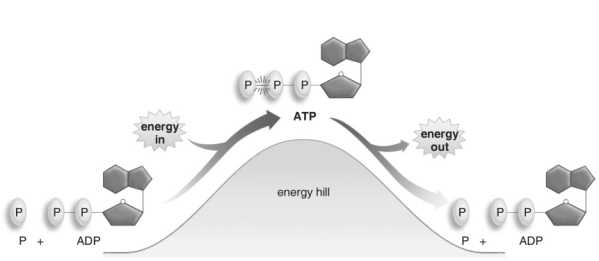Course
Other
Study Pack
Set 7 Deriving Energy From Food
Question 1
(Multiple Choice)
Free
Each ADP molecule contains ________ phosphates, and each ATP molecule contains ________ phosphates.
A) one; two
B) three; three
C) one; three
D) two; two
E) two; three
Answer
Question 2
(Multiple Choice)
Free
 Refer to the figure above and then answer the question that follows.
Refer to the figure above and then answer the question that follows.-ATP powers reactions in cells when:
A) ATP gives up two of its phosphate groups to become AMP.
B) ATP gives up all three of its phosphate groups.
C) ATP gives up one phosphate group to become ADP.
D) ADP adds a phosphate group to become ATP.
Answer
Question 3
(Multiple Choice)
Free
Which of the following statements concerning oxidation and reduction reactions is false?
A) If one molecule is oxidized, another must be reduced.
B) A molecule that has gained an electron has been reduced.
C) Oxygen is required for all oxidation reactions.
D) NADH is the reduced form of NAD+.
Answer